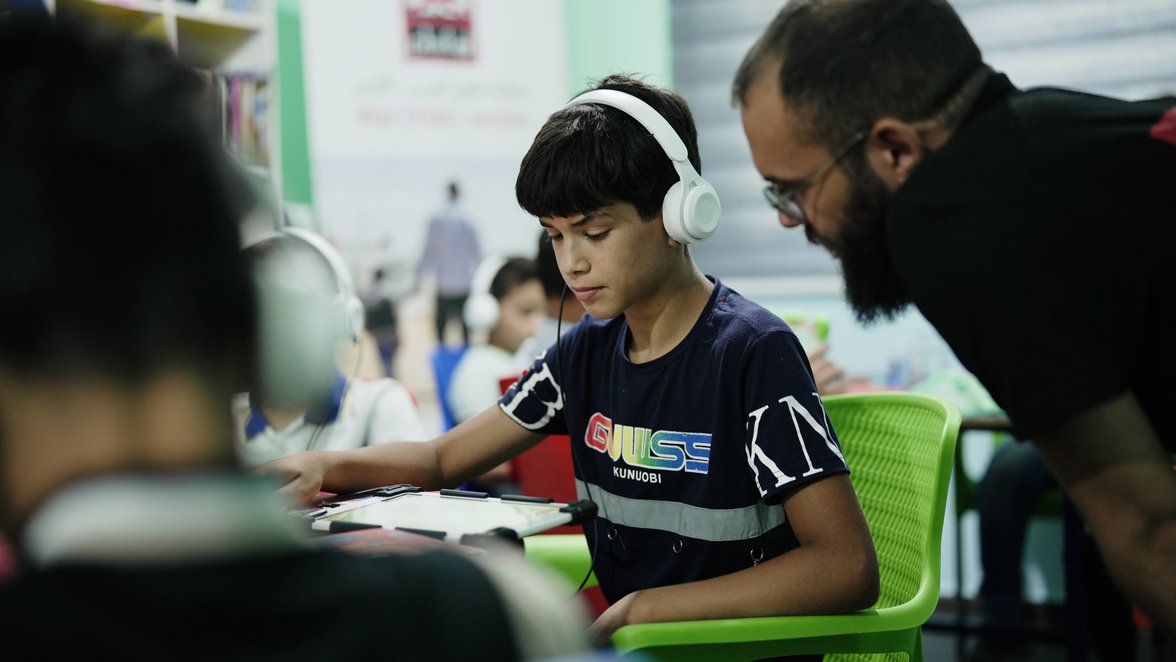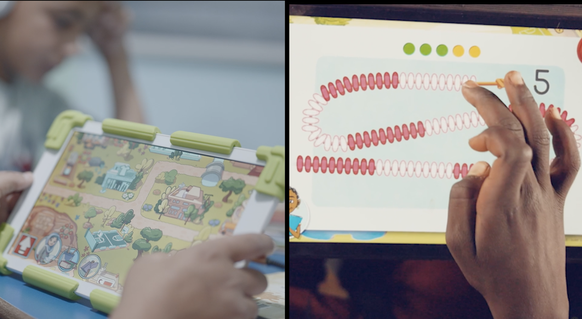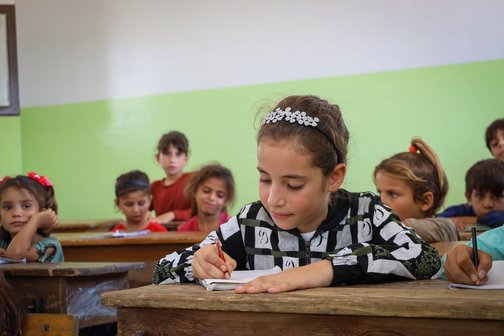Hussein Al-Amoudi Breaks Down The Development Process of EdTech
April 5, 2024

What is Gobee and what was the development process?
“Gobee is a gamified learning assessment tool developed by War Child, NYU Global Ties and the Humanitarian Education Accelerator (HEA). It was born out of the need to find adaptive ways of measuring the effectiveness of digital education interventions like Can’t Wait to Learn. It was designed to measure both academic performance and social and emotional learning skills which is particularly relevant following the shift to remote learning in the wake of the COVID-19 pandemic.
The development process for the tool was very ambitious and complex. Based on sector feedback, we found ourselves expanding our scope to try to cover lots of different things. There was a need for a tool that would evaluate children’s knowledge as they learn [formative assessment], create or adjust content easily in the platform as well as display data in an accessible dashboard so teachers don’t have to dedicate too much time and effort. We also looked at monitoring and evaluation and how we could use the data for summative purposes so Ministries can make informed decisions.
We were looking at the whole ecosystem - from donors to Ministries to teachers, parents and children - all of whom have different needs. It wasn’t realistic to try and cover everything but we needed time to find a sustainable way forward. That’s why we took a pause in 2023 and created the Gobee Learning Agenda.”
What did you learn from the Gobee pilot in Jordan?
“During the development of the tool, we consulted with education in emergencies (EiE) actors about what was valuable to have in a tool like Gobee. After a first round of development, we introduced it in Jordan to test the usability and teacher’s impression.
At that point, we noticed two things. One - the restrictions were starting to lift and suddenly people didn’t want to hear about COVID. So, then we had to sit back and ask ourselves: are we still focused on the crisis and providing digital alternatives? Or are we looking at the broader prospect of formative assessments and how teachers could use them in their classroom practices?
Two - technology fatigue. After the pandemic, teachers were very tired of all the different platforms; the different tools they had to engage with. What we heard was: the concept is amazing but we don’t want another platform. This led us to start thinking about how we could integrate Gobee into existing platforms or as part of a broader blended package of tools and resources that teachers already have access to.”
Tell us about the next steps for Gobee?
“What we found was that Gobee would not be sustainable or viable if it remained as a stand-alone product. So, we spent time looking at it and thinking about whether and how the tool could be integrated into what’s already out there.
Approaching Gobee as this wider package makes more sense. And that package needs to be a blend of online and offline interventions where there are options for teacher’s professional development.”
You mentioned Can’t Wait to Learn - War Child’s e-learning innovation. How does that relate to the Gobee project?
“Can’t Wait to Learn (CWTL) is actually a great example of the merits of a blended approach. So, the Gobee team had this “big sister” programme they could learn from. From the CWTL perspective, the more we have in our “toolkit”, the better. EdTech in general has been very focused on the student side of things but we really need to balance this with supporting teachers to do their job.
The concept of formative assessment is also a focus for Jordan, which makes integrating Gobee into CWTL here an interesting option. Before this exciting opportunity goes ahead, we need to go through a rigorous validation process and secure funding.”

